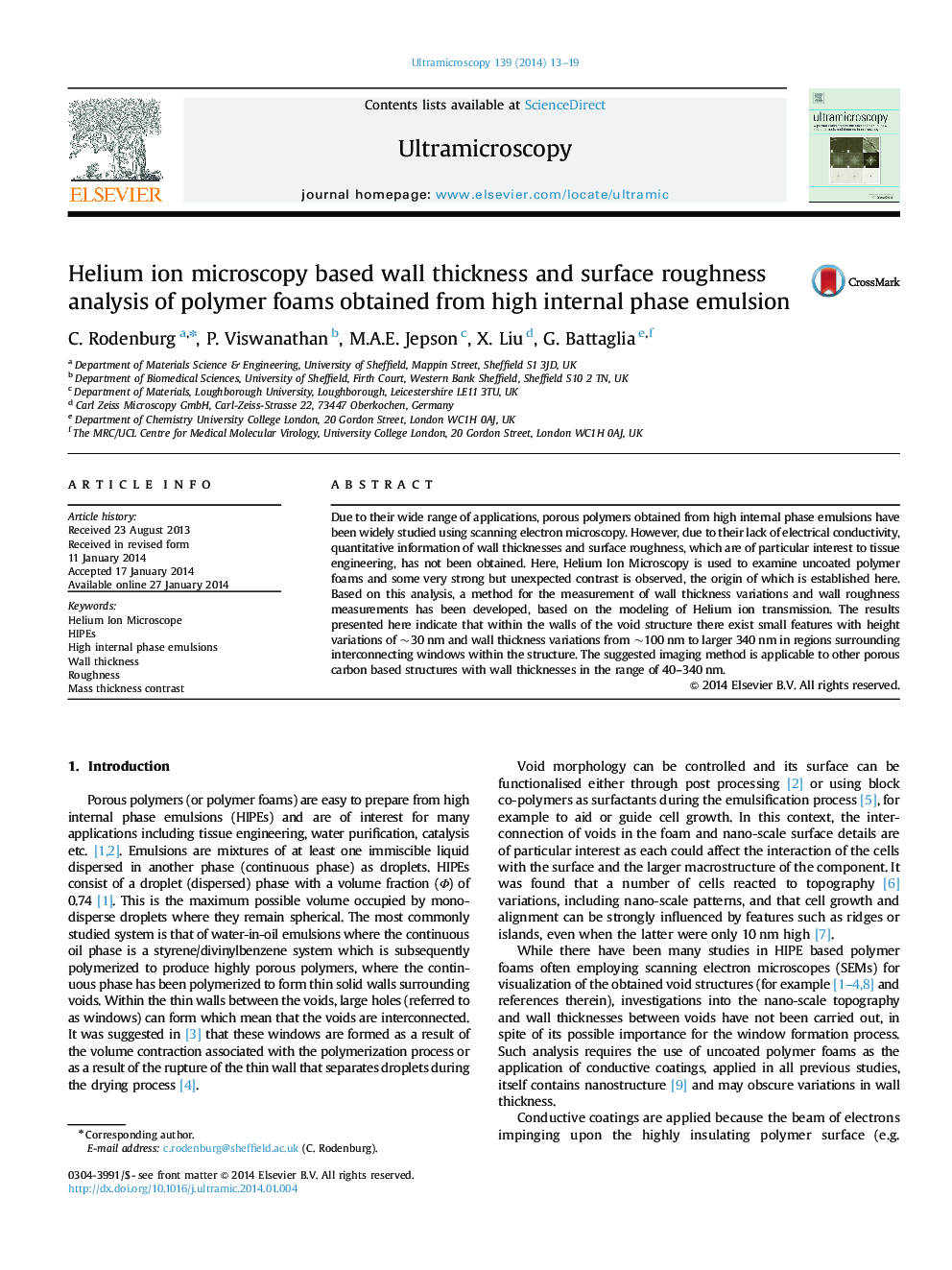| Article ID | Journal | Published Year | Pages | File Type |
|---|---|---|---|---|
| 1677466 | Ultramicroscopy | 2014 | 7 Pages |
Abstract
Due to their wide range of applications, porous polymers obtained from high internal phase emulsions have been widely studied using scanning electron microscopy. However, due to their lack of electrical conductivity, quantitative information of wall thicknesses and surface roughness, which are of particular interest to tissue engineering, has not been obtained. Here, Helium Ion Microscopy is used to examine uncoated polymer foams and some very strong but unexpected contrast is observed, the origin of which is established here. Based on this analysis, a method for the measurement of wall thickness variations and wall roughness measurements has been developed, based on the modeling of Helium ion transmission. The results presented here indicate that within the walls of the void structure there exist small features with height variations of ~30Â nm and wall thickness variations from ~100Â nm to larger 340Â nm in regions surrounding interconnecting windows within the structure. The suggested imaging method is applicable to other porous carbon based structures with wall thicknesses in the range of 40-340Â nm.
Related Topics
Physical Sciences and Engineering
Materials Science
Nanotechnology
Authors
C. Rodenburg, P. Viswanathan, M.A.E. Jepson, X. Liu, G. Battaglia,
